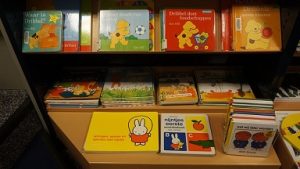Bee’s Knees Reading Method
Bee’s Knees Reading Method
Teaching Early Reading
What next? Your young learner knows the letters of the alphabet and their matching sounds. Whether we call them Magic Words, Sight Words or High Frequency Words doesn’t matter. (Link: 100 Sight Words, Post ). Some people claim that sight words are a bad thing. Their argument is that sight words are hard to learn. Another argument is that children get confused. I haven’t found that in my teaching work. A child needs to see a word up to 40 times to recognise it – or so the theory says.

Alongside learning the sight words a child can read simple texts. On www.tutoringprimary.au are loads of simple texts for children to read, write, and write simple answers such as yes or no. They can copy words as answers too.
Links to suitable items: “In My House” Literacy Prep, Grade 1, “Will and the Bat” Prep, Grade 1. And for Grade2: “Ben’s Hens” Literacy Grade 2, “There In The Air” Literacy Grade 2.
Children learn quickly and many know their sight words so fast that this knowledge springboards them into reading simple texts. The time to worry is when a child is not able to learn them. But give them time. You’ll know if they are learning because you can monitor progress by keeping written records.
Terms Used in Education
The term ‘magic words’ is for the children, and the term ‘high frequency words’ is a mouthful.
But we get the idea. So I’ll settle for the term ‘sight words’ here. And a further point: only about 20% of the first 100 sight words do not follow one of the twenty-two spelling rules. This is mainly for historical reasons.
Some Links: Early Primary School, Page, Dyslexia and Early Literacy, Post, How to Teach Hand-Printing, Post, Learning Times Tables, Post
The student can sound out h – i – m . And as for words like my, teach them as a sight word in Prep and Grade 1. By Grade 2 the student will learn try, cry, fly and others by applying the rule learned in Prep and Grade 1. Children will learn the rule instinctively. And later, the student picks up that the letter y can make three different sounds, i as in happy, y as in yes and y as in the word “I”. Of course, teaching them explicitly is a great idea too!
Many teachers and academics do not like rote-learning and use the term in a derogatory way. It’s what we used to call ‘learning by heart’. And yet it has many benefits. Firstly, children like learning things by heart. Songs and nursery rhymes are good examples. Secondly, it moves them forward quickly. Understanding comes later. It’s not always the other way round.
From Sight Words to Text
- Sight words help to move children quickly into reading.
- Simple stories using sight words and 3-letter words give children confidence in reading.
- Word Wall will help children to master the sight words. Here is the link: “Word Wall” Early Primary School
Print in A3 to stick on a wall, or A4 for a folder. They are named WW1, WW2 and so on. They are hand-printed in black marker.
The Word Wall is based on Dolch and Fry word lists with plenty of research to underpin them. They have stood the test of time.